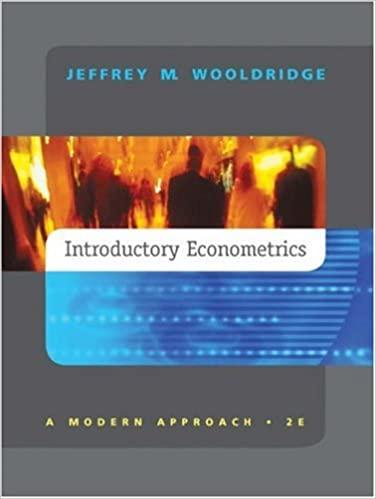Question
Labor economist and others have a long tradition of trying to establish causal links between features of the classroom environment and children's learning, an area
Labor economist and others have a long tradition of trying to establish causal links between features of the classroom environment and children's learning, an area of investigation that we call "education production." This terminology reflects the fact that we think of features of the school environment as inputs that cost money, while the output that schools produce is student learning. A key question in research on education production is which inputs produce the most learning given their costs. One of the most expensive inputs is class size, since smaller classes can only be achieved by hiring more teachers. It is therefore important to know whether the expense of smaller classes has a payoff in terms of higher student achievement.
A randomized study, the Tennessee STAR experiment, was designed to estimate the effects of smaller classes in primary school. It cost about $12 million and was implemented for a cohort of kindergarteners in 1985-1986. The study ran for four years, until the original cohort of kindergartners was in third grade and involved about 11,600 children. The average class size in regular Tennessee classes in 1985-1986 was about 22.3. The experiment assigned students to one of two treatments: small classes with 13-17 children and regular classes with 22-25 children.
1.How do you plan to use the STAR experiment to estimate the effect of smaller classes assuming test score is your outcome?
2.Please explain why the Tennessee STAR experiment can be used to estimate the effects of smaller classes without bias. Please first explain why simply comparing outcomes of children in small classes v.s. those in regular classes using non-experimental data cannot give us an accurate estimate. Then explain why using the STAR experiment data can.
Using the Tennessee STAR experiment data, the following table reports impacts of small classes on three outcomes, test score rank at the end of kindergarten (i.e. percentiles), probability of going to college, and future earnings. Results in the table are obtained using regressions of outcomes on an indicator of class size where 0 means the child is in a regular class and 1 means the child is in a small class [Krueger 1999; Chetty et al. 2011].
The first row of the table presents outcomes. The second row presents the impacts of small classes on the three outcomes. For example, the interpretation of 4.81 in column 2 is that being in a small class v.s. a regular class increases a child's test score at the end of kindergarten by 4.81 percentiles (alternatively, 4.81 percentiles can be interpreted as the difference in average test scores between children who are in small classes and those who are in regular classes).

Step by Step Solution
There are 3 Steps involved in it
Step: 1

Get Instant Access to Expert-Tailored Solutions
See step-by-step solutions with expert insights and AI powered tools for academic success
Step: 2

Step: 3

Ace Your Homework with AI
Get the answers you need in no time with our AI-driven, step-by-step assistance
Get Started


